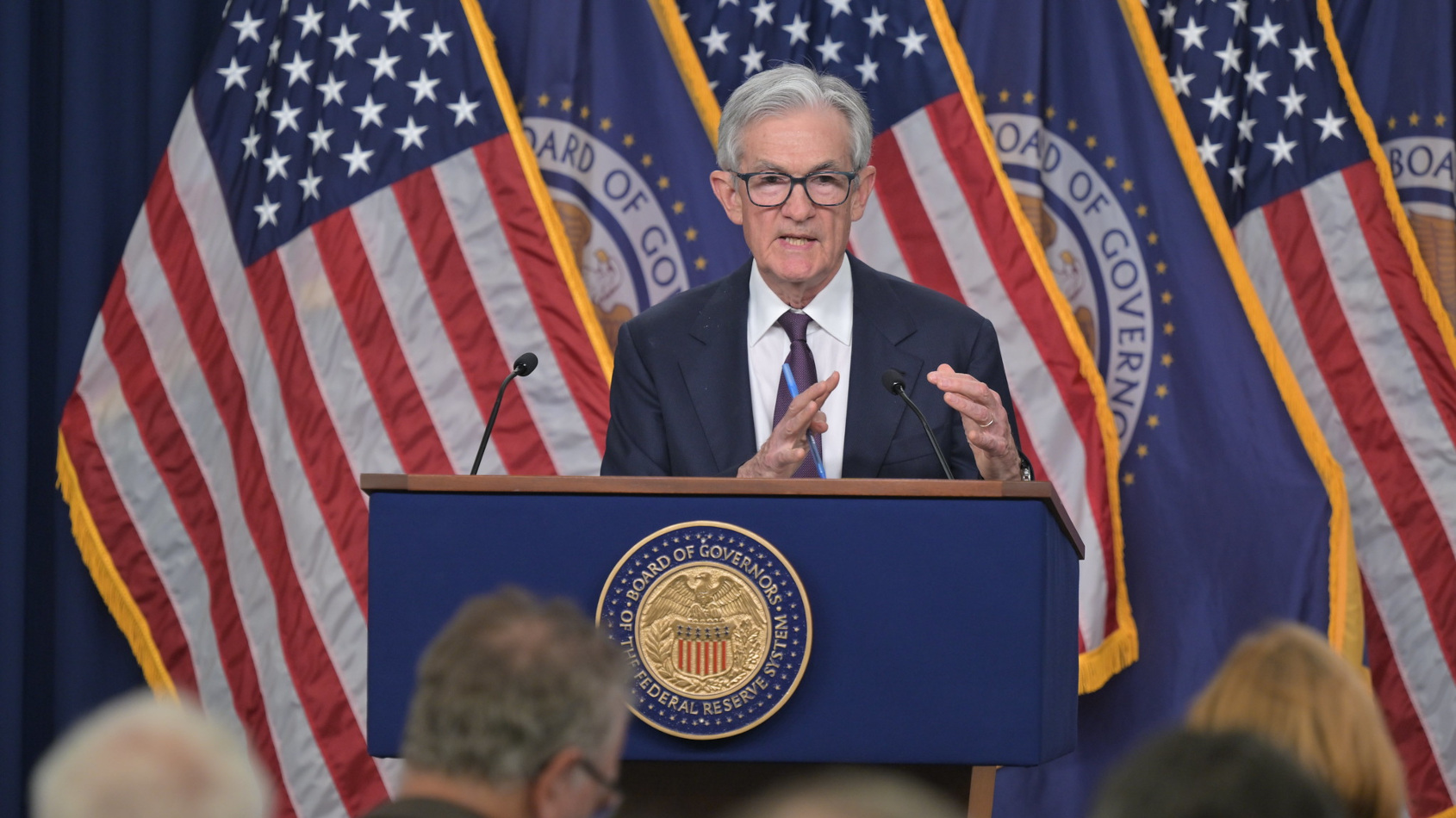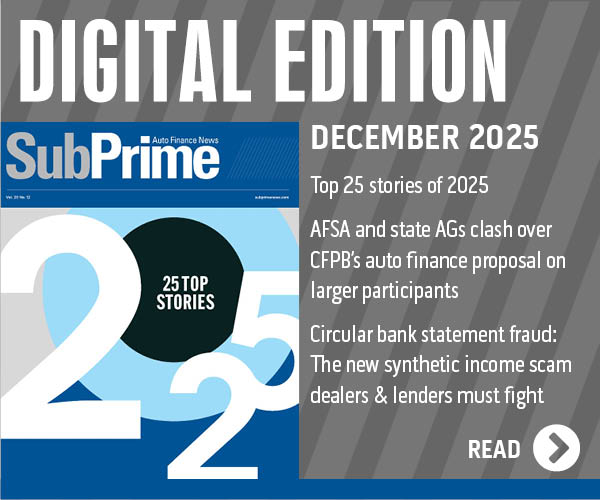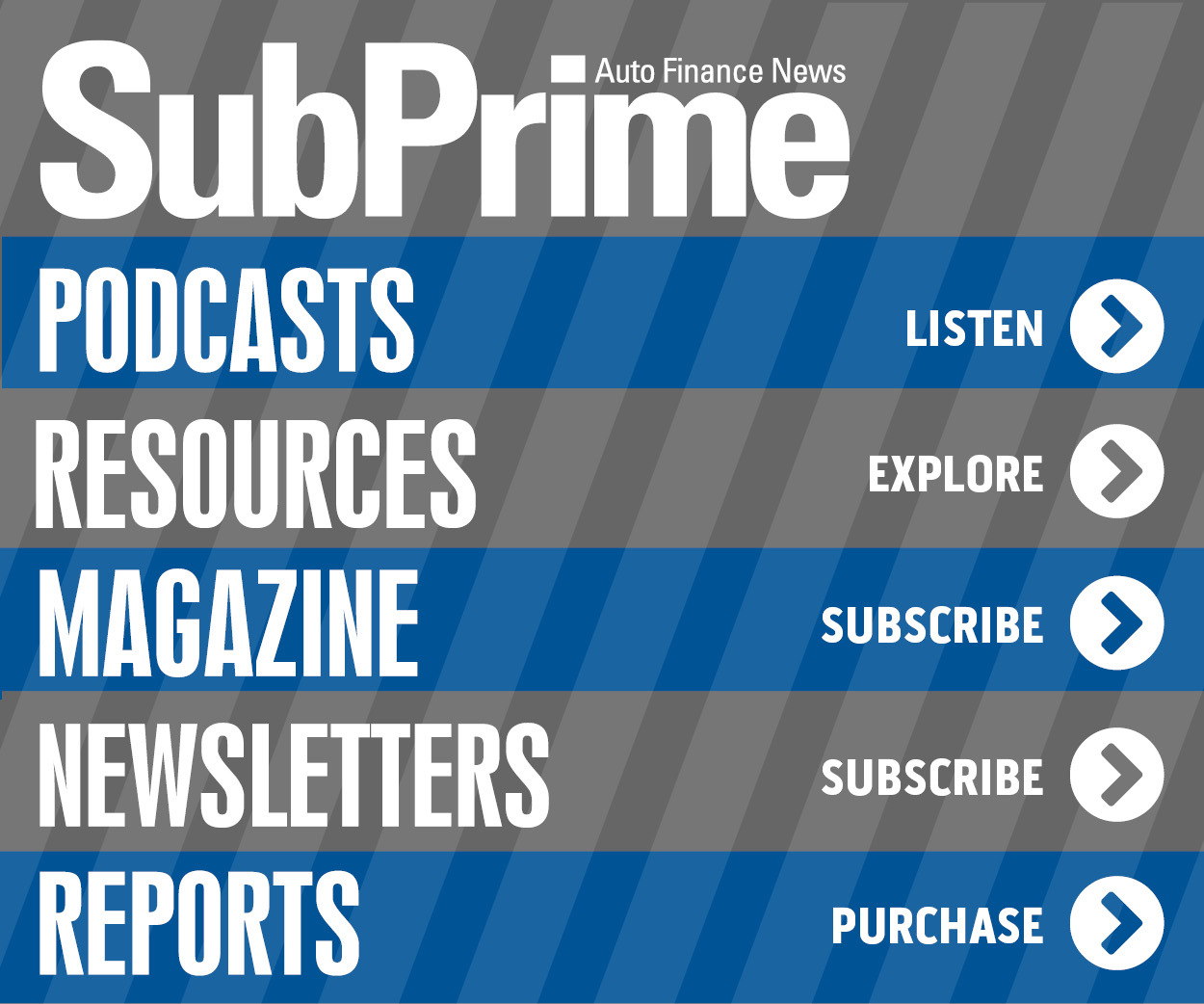As rates stay unchanged, headwinds build against auto retailers & financiers

Federal Reserve chair Jerome Powell addresses questions on Wednesday in Washington, D.C. Photo courtesy of the Fed.
By subscribing, you agree to receive communications from Auto Remarketing and our partners in accordance with our Privacy Policy. We may share your information with select partners and sponsors who may contact you about their products and services. You may unsubscribe at any time.
In what economists said was “universally expected,” the Federal Reserve left the federal funds target rate unchanged on Wednesday.
The Federal Open Market Committee (FOMC) kept that rate at a range of 4.25% to 4.50% and reiterated a deliberate approach to potentially making any changes later this year amid tariffs and other market turmoil.
But dealerships have metal to move and finance companies have portfolios to fill with quality paper.
Cox Automotive chief economist Jonathan Smoke tried to give some perspective to help salespeople and underwriters.
“The biggest change in auto loan rates over the last two months has been a direct response to tariffs, leading to tighter supply and higher prices in the new-vehicle market. As a result, manufacturers have been spending less on attractive auto loan offers,” Smoke wrote in his analysis posted after Wednesday’s Fed decision.
“Since February, incentives are down, vehicle prices are up, and the average new auto loan rate is unchanged, remaining just 36 basis points below a 25-year high reached last June,” Smoke continued.
Subscribe to Auto Remarketing to stay informed and stay ahead.
By subscribing, you agree to receive communications from Auto Remarketing and our partners in accordance with our Privacy Policy. We may share your information with select partners and sponsors who may contact you about their products and services. You may unsubscribe at any time.
“By contrast, in the used-vehicle market, where incentives do not influence rates as heavily, average rates were at a 25-year high in February but have since fallen by about 80 basis points to just under 14% on average this week,” he added.
President Trump eased his tariff aggression on the automotive sector, but Smoke explained that the impact of initial decisions had already left an imprint.
“Consumers jumped initially to buy ahead of tariffs, driving prices higher. Now, vehicle supply is tighter, prices are rising, and incentives are falling, adding to the pressure of keeping rates high. And all of these dynamics suggest that consumers may soon join the Fed in waiting to see what happens,” Smoke wrote.
“We are expecting volatility this summer in rates, prices and sales. When rates and prices move higher, sales are likely to fall. When lower sales lead to lower prices and more attractive rate offers, sales are likely to increase. Consumers are far more price and payment sensitive than they were back in 2021,” Smoke continued.
“Chair (Jerome) Powell said today that the committee doesn’t have to be in a hurry. It’s likely that car buyers will be taking a similar approach as well,” Smoke went on to say.
Meanwhile, in Washington, D.C., Powell pointed out that inflation has eased since hitting a recent peak three years ago, buoyed by what the Fed chair called “solid” conditions in the labor market. Powell also acknowledged GDP is on a downward trajectory.
Then in his opening statement of Wednesday’s news conference, Powell addressed what’s been coming from the White House.
“The new administration is in the process of implementing substantial policy changes in four distinct areas: trade, immigration, fiscal policy, and regulation,” Powell said. “The tariff increases announced so far have been significantly larger than anticipated. All of these policies are still evolving, however, and their effects on the economy remain highly uncertain.
“As economic conditions evolve, we will continue to determine the appropriate stance of monetary policy based on the incoming data, the outlook, and the balance of risks,” he continued. “If the large increases in tariffs that have been announced are sustained, they are likely to generate a rise in inflation, a slowdown in economic growth, and an increase in unemployment. The effects on inflation could be short-lived — reflecting a one-time shift in the price level.
“It is also possible that the inflationary effects could instead be more persistent,” Powell went on to say. “Avoiding that outcome will depend on the size of the tariff effects, on how long it takes for them to pass through fully into prices, and, ultimately, on keeping longer-term inflation expectations well anchored.
Powell then reiterated how important it is for the Fed to monitor and do what it can to keep inflation under control.
“Our obligation is to keep longer-term inflation expectations well anchored and to prevent a one-time increase in the price level from becoming an ongoing inflation problem,” he said. “As we act to meet that obligation, we will balance our maximum employment and price-stability mandates, keeping in mind that, without price stability, we cannot achieve the long periods of strong labor market conditions that benefit all Americans.
“We may find ourselves in the challenging scenario in which our dual-mandate goals are in tension,” he added. “If that were to occur, we would consider how far the economy is from each goal, and the potentially different time horizons over which those respective gaps would be anticipated to close. For the time being, we are well positioned to wait for greater clarity before considering any adjustments to our policy stance.”
The Fed has a little more than a month to consider those adjustments, as the opportunity for policymakers to adjust rates arrives on June 18.
Comerica Bank chief economist Bill Adams and senior economist Waran Bhahirethan said their forecast assumes a partial rollback of tariffs in the next month or two. Adams and Bhahirethan are predicting the Fed to lower rates in the second half of the year with cuts coming in July, September and December.
Adams and Bhahirethan explained why policymakers might be so incentivized to act during the second half of 2025, citing trends that dealerships and finance companies might not find too encouraging.
“In contrast to backward-looking hard data, forward-looking indicators of the job market and economy are softening,” Adams and Bhahirethan said in an analysis released late on Wednesday. “Job openings fell in March to near the lowest since early 2021, and businesses are reporting more cautious hiring plans in surveys.
“Meanwhile, consumers are freaked out, both by expectations of another round of inflation and by fears of higher unemployment,” they continued. “Economists are inclined to take jittery consumer surveys with a grain of salt after consumers screamed bloody murder about the economy in 2022 and 2023 while splurging on vacations and other discretionary experiences. But lately there are signs that consumers are beginning to act on their bad vibes. Consumer spending on hotels and airport foot traffic softened in April. Also, a number of public companies in consumer-facing industries have pulled earnings guidance in recent weeks, a sign their order books could be weakening.
“The wildcard is that tariff policies continue to change rapidly, and with them, the economic outlook,” Adams and Bhahirethan went on to say. “If the government quickly announces wins on trade negotiations and lowers effective tariff rates, consumer and business sentiment could rebound, economic growth could regain traction, and inflation concerns could recede. On the other hand, if tariffs hold at current levels for an extended period, or rise further, another painful round of inflation could follow, with a retrenchment of consumer spending and higher unemployment.
“Near-term, the overhang of tariff uncertainty is restraining businesses’ plans for capital expenditures and hiring. Also, there is a risk that businesses run short on inventories in the next few months if they delay purchases on a gamble that an imminent trade deal will lower tariff rates. Shortages could start to snarl the goods-using parts of the economy, like manufacturing and construction, in the summer or fall,” they added.


